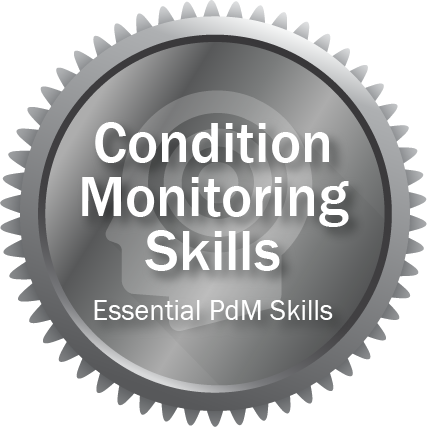Condition Monitoring > Condition Monitoring Skills
Preface
Essential Machinery Analysis … Many of today’s PdM programs miss the vital communication link that ties supervision, maintenance technicians, planners, and all levels of production together. Much of this poor communication stems from a lack of understanding of the analysis language, technology capabilities and the coordination of technicians with production personnel to improve the performance of physical assets and manufacturing process. This class provides an understanding of vibration condition analysis and monitoring techniques that permit attendees to more effectively utilize and apply vital analysis information for day to day and long term reliability improvement efforts.
Objectives
Session attendees will understand how to correctly determine and gather the correct vibration analysis data, utilize investigative analysis techniques to more correctly identify failure sources and assist in the determination of improvement actions. The session reviews vibration sources resulting from: unbalance, misalignment, assembly, resonance, bearings, electrical, beat vibration, gear mesh and flow related systems. Attendees will utilize various analysis techniques to recognize and determine root failure sources and leave with an understanding of how to apply vibration analysis as a troubleshooting and reliability manufacturing improvement tool. The class is enhanced with actual field case histories, team working exercises and the use of hands-on vibration measurements on live dynamic models that emulate and replicate various failure sources. Participants will discuss and review various analysis methodologies and applications to more effectively use vibration measurements to assess machinery and system performance in preventive maintenance inspections and routines. Participants are also introduced to relative motion analysis to provide a more effective source analysis result. Session attendees return to the facility ready to more effectively communicate with condition monitoring personnel and assist with: asset strategy development, machinery performance audits and a renewed determination to remove failure sources.
Processes Covered
- Reliable Manufacturing Introduction
- Role of Vibration Analysis in Reliable Manufacturing
- General Analysis Process
- Review of Spectrum Analysis Process
- Phase Collection and Analysis
- Understanding Resonance
- Utilizing Mode Shape Plots
- Creating the Ten Point Plot in the Field
- Bump, Startup and Coast-Down Tests
- Understanding Unbalance Sources
- Unbalance Types & Using Various Methods to Prove Unbalance
- Recognizing Misalignment Sources
- Various Methods to Prove Misalignment
- Understanding and Separating Assembly Error Sources
- Various Bearing Failure Stages with Source analysis
- Precision Vibration Acceptance Criteria
- Determining External and Internal Looseness
- Belt Drive Frequencies and Analysis
- Beat Vibration Sources and Frequency Determination
- Analyzing Common Motor Faults
- Recognizing Various Pump Styles With Analysis
- Analyzing Pump System Faults
- Understanding Gear Vibration
- Fan Vibration and Various Faults
- Pre/Post Maintenance Quality Control Checks
- Report Writing and Effective Communication
- Analysis of Various Field Case History Examples
- When to Notice or Investigate
- Applying Analysis in PM Routines
- Effective Analysis Improvement Options


